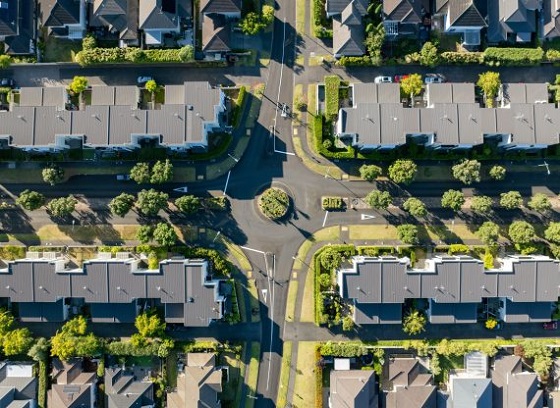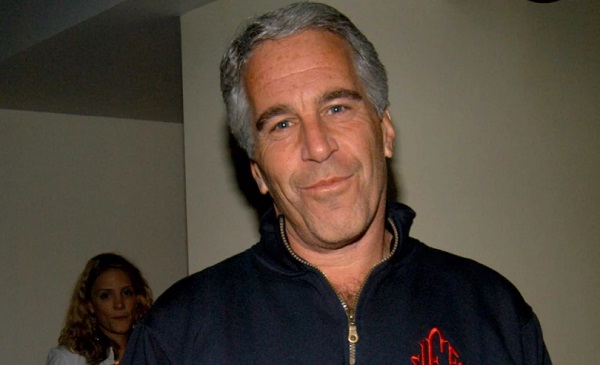Poilievre plans to use money set aside in the Liberal’s Housing Accelerator Fund which he says has been ineffective.
Housing
Poilievre will cut sales tax on new homes under $1 Million saving tens of thousands

From a Conservative Party of Canada news release
In a video released Monday, Conservative Leader Pierre Poilievre has announced a plan to lower the cost of a new home’s worth under $1 million dollars.
Poilievre says a conservative government will axe the sales tax on new homes sold for less than $1 million.
That would cut the cost of an $800,000 home by $40,000 or a $500,000 home by $25,000.
Accordingly Poilievre says this will lead to the building of an extra 30,000 new homes every year.
The news could get even better as the PM hopeful says he’ll push provinces to drop their sales tax as well.
Business
A new federal bureaucracy will not deliver the affordable housing Canadians need

Governments are not real estate developers, and Canada should take note of the failure of New Zealand’s cancelled program, highlights a new MEI publication.
“The prospect of new homes is great, but execution is what matters,” says Renaud Brossard, vice president of Communications at the MEI and contributor to the report. “New Zealand’s government also thought more government intervention was the solution, but after seven years, its project had little to show for it.”
During the federal election, Prime Minister Mark Carney promised to establish a new Crown corporation, Build Canada Homes, to act as a developer of affordable housing. His plan includes $25 billion to finance prefabricated homes and an additional $10 billion in low-cost financing for developers building affordable homes.
This idea is not novel. In 2018, the New Zealand government launched the KiwiBuild program to address a lack of affordable housing. Starting with a budget of $1.7 billion, the project aimed to build 100,000 affordable homes by 2028.
In its first year, KiwiBuild successfully completed 49 units, a far cry from the 1,000-home target for that year. Experts estimated that at its initial rate, it would take the government 436 years to reach the 100,000-home target.
By the end of 2024, just 2,389 homes had been built. The program, which was abandoned in October 2024, has achieved barely 3 per cent of its goal, when including units still under construction.
One obstacle for KiwiBuild was how its target was set. The 100,000-home objective was developed with no rigorous process and no consideration for the availability of construction labour, leading to an overestimation of the program’s capabilities.
“What New Zealand’s government-backed home-building program shows is that building homes simply isn’t the government’s expertise,” said Mr. Brossard. “Once again, the source of the problem isn’t too little government intervention; it’s too much.”
According to the Canadian Mortgage and Housing Corporation, Canada needs an additional 4.8 million homes to restore affordability levels. This would entail building between 430,000 to 480,000 new units annually. Figures on Canada’s housing starts show that we are currently not on track to meet this goal.
The MEI points to high development charges and long permitting delays as key impediments to accelerating the pace of construction.
Between 2020 and 2022 alone, development charges rose by 33 per cent across Canada. In Toronto, these charges now account for more than 25 per cent of the total cost of a home.
Canada also ranks well behind most OECD countries on the time it takes to obtain a construction permit.
“KiwiBuild shows us the limitations of a government-led approach,” said Mr. Brossard. “Instead of creating a whole new bureaucracy, the government should focus on creating a regulatory environment that allows developers to build the housing Canadians need.”
The MEI viewpoint is available here.
* * *
The MEI is an independent public policy think tank with offices in Montreal, Ottawa, and Calgary. Through its publications, media appearances, and advisory services to policymakers, the MEI stimulates public policy debate and reforms based on sound economics and entrepreneurship.
Fraser Institute
Federal government’s ‘affordable housing’ strategy doomed without strong income growth

From the Fraser Institute
By Jake Fuss and Austin Thompson
Economist Mike Moffatt estimated that, if Canadian wages grow at the average rate seen over the past two decades—and if home prices remain stable—it would still take 20 years for Canada to achieve housing affordability levels of 2005… In other words, reality remains at odds with the Carney government’s ambitious rhetoric about delivering so-called “affordable homes.”
In a recent media scrum, the Carney government’s new federal housing minister Gregor Robertson—former mayor of Vancouver—was asked: “Should home prices go down?” His response: “No, I think that we need to deliver more supply, make sure the market is stable. We need to be delivering more affordable housing.”
Robertson’s response raises a follow-up question: what does the Carney government mean when it promises “affordable housing”?
Rising house prices are nothing new. The sticker price for the average Canadian home has increased in most years, barring periods such as the 2008–09 Global Financial Crisis. And house prices aren’t expected to fall anytime soon; forecasts point to continued house price growth. But for homebuyers, the key issue isn’t that prices are increasing; it’s whether they’re rising faster than incomes. By that measure, housing in Canada has become much less affordable in recent years.
Consider Minister Robertson’s tenure as Vancouver mayor from 2008 to 2018. During that time, the price of a typical single- or semi-detached Vancouver home grew from $690,000 to $1,980,000—a 187 per cent increase. Meanwhile, the after-tax income of a typical Vancouver family rose by just 15 per cent. Today, the typical single- or semi-detached home in Vancouver costs $2,380,000. Vancouver’s housing market is somewhat unique, but strong price increases reflect a broader national trend: home prices have risen dramatically even as income growth has stagnated, largely because housing demand—driven by immigration-fuelled population growth—continues to far exceed new housing construction.
Which takes us back to the question of “affordability.” Housing can become more “affordable” even as home prices rise, so long as the after-tax incomes of Canadians grow even faster. This has happened before—after-tax wage growth exceeded house price increases in the late 1980s, for example. Unfortunately, this seems unlikely to happen in the 2020s.
In fact, while house prices have soared, wage growth in Canada has stagnated. Consequently, in 2022 (the latest year of available comparable data), the typical worker in Alberta—Canada’s highest-wage province—earned less than the typical worker in low-wage U.S. states such as Mississippi and West Virginia. And from 2014 to 2024, Canada’s GDP per-person, an indicator of incomes and living standards, grew by a mere 2.0 per cent compared to 19.6 per cent in the United States.
In a recent analysis, economist Mike Moffatt estimated that, if Canadian wages grow at the average rate seen over the past two decades—and if home prices remain stable—it would still take 20 years for Canada to achieve housing affordability levels of 2005. And of course, much could go wrong—if wage-growth estimates fall short, mortgage rates rise or house prices rise, then that slow march towards housing affordability may never end for many Canadians including young people looking to start a family.
In other words, reality remains at odds with the Carney government’s ambitious rhetoric about delivering so-called “affordable homes.”
Again, the government wants to double the rate of homebuilding in Canada in a decade. Is that possible? Currently, Canada lacks the required savings and investment to fund that level of building. And due to tepid growth of our construction workforce, we currently do not have the manpower to build twice as many homes. And as always, local opposition to rapid housing development in certain neighbourhoods and public lands may also prove hard to overcome.
But even if somehow Canada was able to marshal the resources and political capital required for such a feat, according to Minister Robertson, the end result would only be to “make sure the market is stable.” Stable, based on today’s prices, means unaffordable for many Canadians unless incomes rise. Clearly, housing supply is only half the battle. To achieve housing affordability on any reasonable timeline, the government must not only help facilitate a major expansion in homebuilding but also substantial growth in Canadian incomes—something the Trudeau government failed to do.
The key is investment, which is required to expand the housing supply, grow Canada’s economy and boost wages. In a capital-scarce economy such as Canada’s, these goals may compete with one another. So governments in Canada, including the Carney government, must adopt policies that attract investment, such as streamlining regulation and reforming capital gains taxes. And crucially, rising incomes will only translate into improved affordability if Canadians can keep more of what they earn, which will difficult given that anticipated increases in federal spending will ultimately result in a higher tax burden. Ottawa must also craft immigration and residency policies so population growth doesn’t continue to overwhelm housing supply and further increase prices.
Canadians should think about housing affordability not just in terms of housing supply but as part of a broader economic challenge—one that also depends on growing the economy, increasing savings and investment, and limiting how much governments take in taxes. Only a comprehensive strategy, centered on broad-based growth, will make the dream of homeownership a reality for generations of Canadians.
-

 Also Interesting2 days ago
Also Interesting2 days ago9 Things You Should Know About PK/PD in Drug Research
-

 Business2 days ago
Business2 days ago‘Experts’ Warned Free Markets Would Ruin Argentina — Looks Like They Were Dead Wrong
-

 Business2 days ago
Business2 days agoCannabis Legalization Is Starting to Look Like a Really Dumb Idea
-

 Bruce Dowbiggin2 days ago
Bruce Dowbiggin2 days agoThe Covid 19 Disaster: When Do We Get The Apologies?
-

 Media2 days ago
Media2 days agoCBC journalist quits, accuses outlet of anti-Conservative bias and censorship
-

 Business2 days ago
Business2 days agoCarney government should recognize that private sector drives Canada’s economy
-

 Alberta1 day ago
Alberta1 day agoFourteen regional advisory councils will shape health care planning and delivery in Alberta
-

 Automotive2 days ago
Automotive2 days agoAmerica’s EV Industry Must Now Compete On A Level Playing Field








